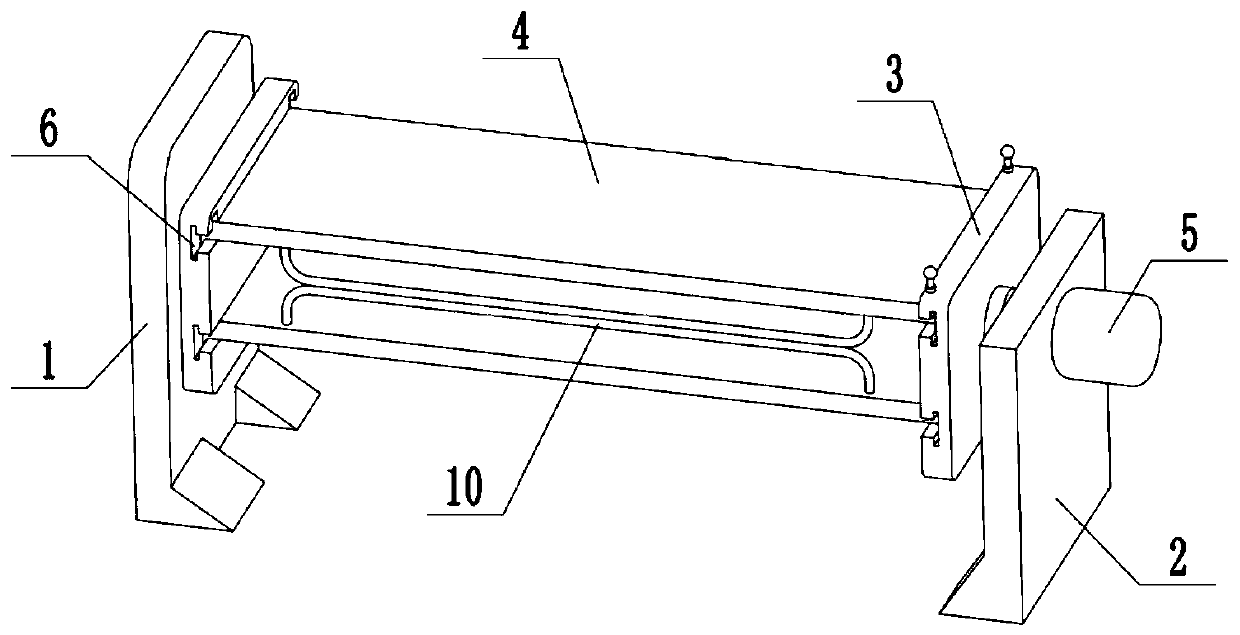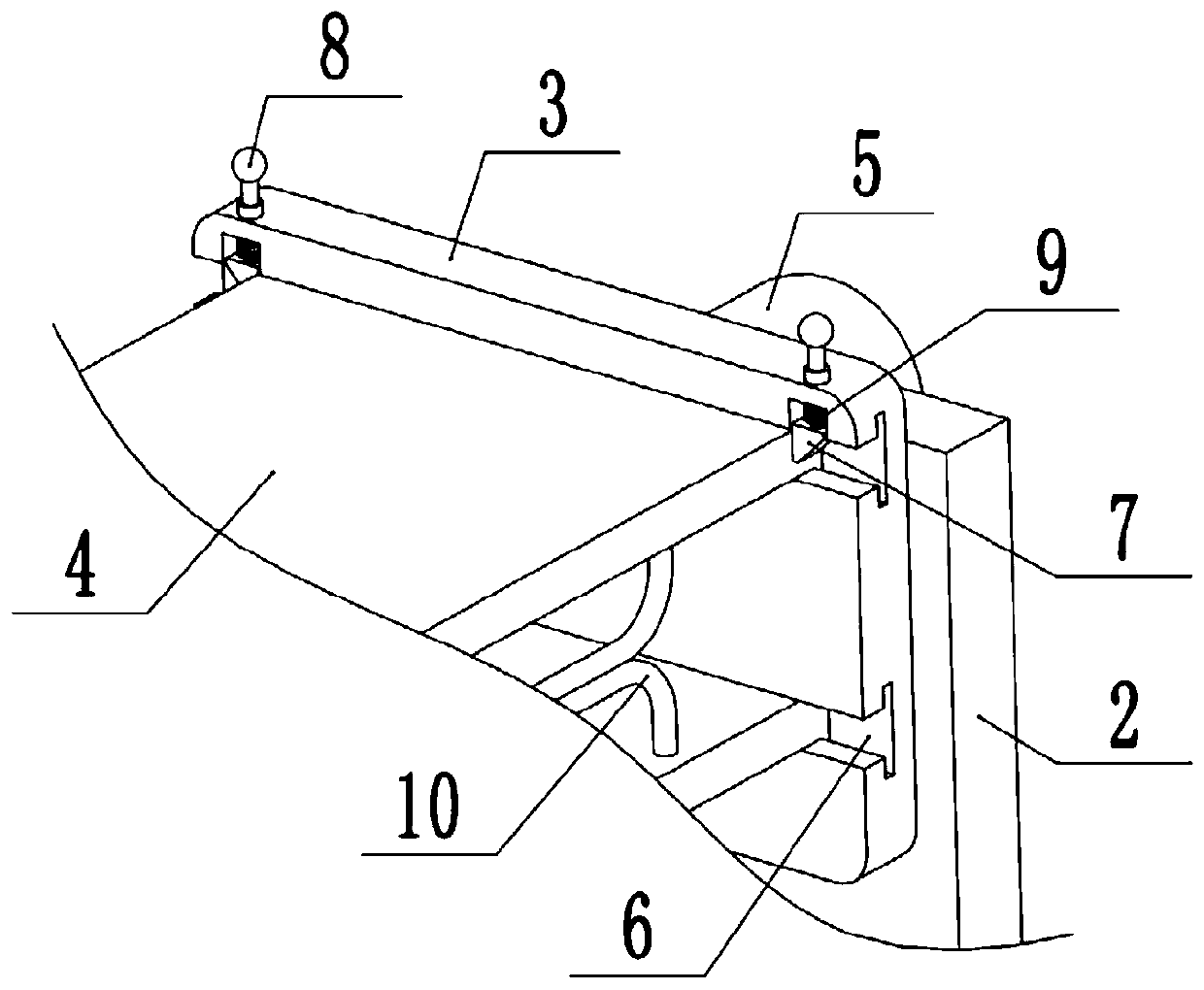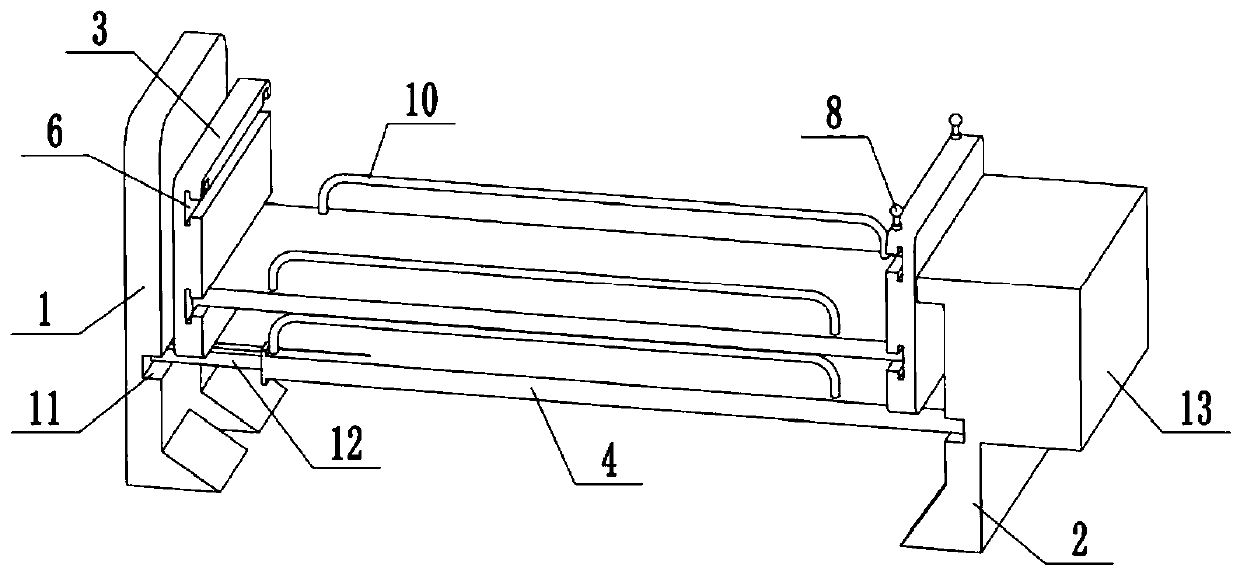Turning-over bed for burn and fracture patients
A technology for patients with fractures and turning over beds, applied in the field of medical beds, can solve problems such as inability to turn patients 180°, and achieve the effects of extending the time, the turning process is safe, and the experience is good
- Summary
- Abstract
- Description
- Claims
- Application Information
AI Technical Summary
Problems solved by technology
Method used
Image
Examples
Embodiment 1
[0037] Embodiment one is basically as attached figure 1 and figure 2 Shown: a turning bed for patients with burns and fractures, including a support frame composed of two vertically parallel support plates on the left and right. There is a place space between the two support plates, and the opposite side walls of the two support plates are rotatably connected with a rotating part. Two bed boards 4 arranged parallel to each other are disassembled and connected, a gap for accommodating patients is provided between the two bed boards 4 , and a stabilizing mechanism for stabilizing the bed board 4 is provided on the supporting board. like figure 1 As shown, the right support plate 2 is provided with a drive mechanism for driving the rotation of the rotating plate 3 on the right support plate 2, and the drive mechanism includes a drive motor 5 fixedly connected to the right side wall of the right support plate 2 by bolts. Among them, the drive motor 5 can be a YE series low-spe...
Embodiment 2
[0047] The difference between embodiment two and embodiment one is: as image 3 As shown, the right side wall of the left support plate 1 and the left side wall of the right support plate 2 are provided with a draw-in slot 11, the draw-in slot 11 is located below the rotating plate 3, and one end of the bed board 4 has a cross section of T-shaped blind hole slot, the baffle plate 12 is slidingly connected along the length direction of the bed board 4 in the blind hole slot, when the baffle board 12 slides to the limit distance outside the bed board 4, the length of the baffle board 12 and the bed board 4 is just enough Inserted into the card slot 11, the bottom surface of the rotating plate 3 connected on the left support plate 1 is in contact with the top surface of the baffle plate 12, and the bottom surface of the rotating plate 3 connected on the right support plate 2 is in contact with the bed plate 4 in the card slot 11. Because the baffle plate 12 and the bed plate 4 in...
Embodiment 3
[0050] The difference between embodiment three and embodiment one is: as Figure 4 As shown, there is a guide groove on the bed board 4 along its length direction, and a pulling mechanism 14 is slidably connected in the guiding groove. In this embodiment, the pulling mechanism 14 is mainly used to pull the fracture position of the fracture patient. 14 can adopt the fracture external fixator commonly used in the prior art, and its specific structure will not be repeated here. The purpose of setting up the pulling mechanism 14 is to pull and fix the patient's fracture, so as to avoid the patient's fracture position being affected by the fracture during the turning process. Dislocation or other injuries are caused by external force; and in the present embodiment, the pulling mechanism 14 is slidably connected in the guide groove, so that the position of the pulling mechanism 14 can be changed, and after the position is changed, the pulling mechanism 14 is fixed by fixing parts suc...
PUM
 Login to View More
Login to View More Abstract
Description
Claims
Application Information
 Login to View More
Login to View More - R&D
- Intellectual Property
- Life Sciences
- Materials
- Tech Scout
- Unparalleled Data Quality
- Higher Quality Content
- 60% Fewer Hallucinations
Browse by: Latest US Patents, China's latest patents, Technical Efficacy Thesaurus, Application Domain, Technology Topic, Popular Technical Reports.
© 2025 PatSnap. All rights reserved.Legal|Privacy policy|Modern Slavery Act Transparency Statement|Sitemap|About US| Contact US: help@patsnap.com



